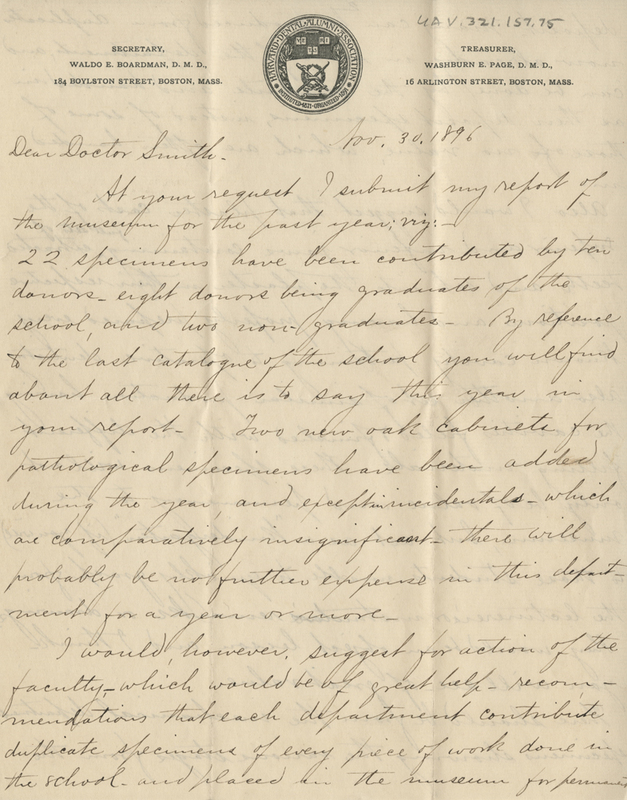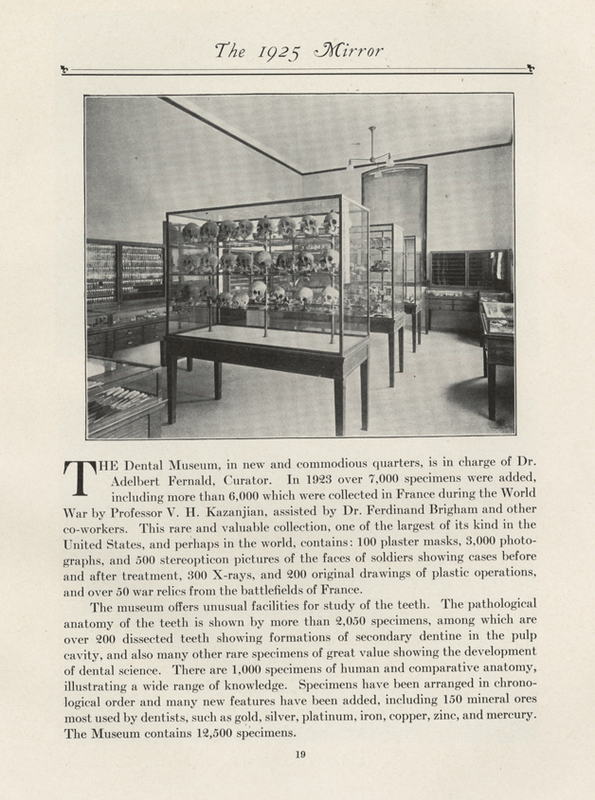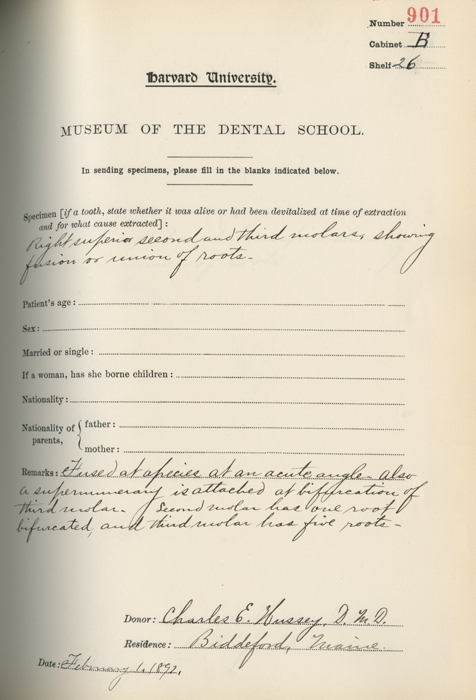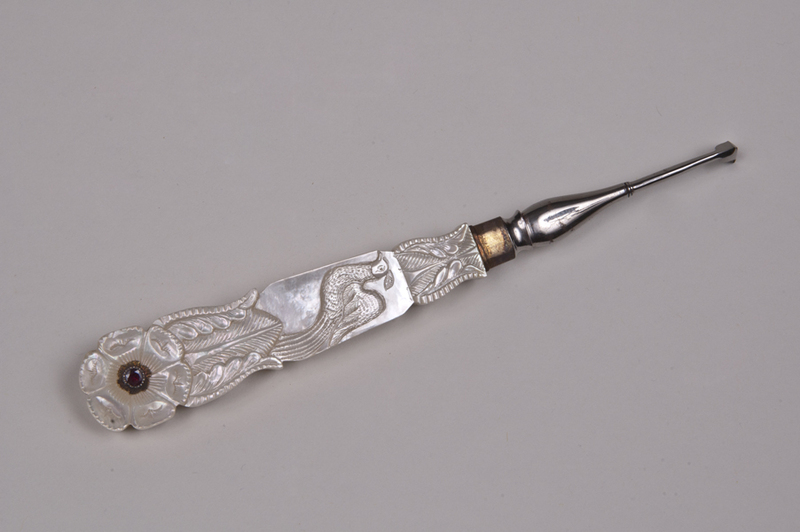Opportunities and Growth
Boardman was quick to seize on the educational opportunities afforded by the collection and suggested to the Dean that casts of jaws with extracted teeth and teeth filled with various materials "will not only be of value and permanency to the Museum, but act as a 'kindergarten' (if you will) to those students unable to quickly grasp from the lecturer's or instructor's remarks or drawings. They would be an object lesson and I think you will see of great value." He requested that any anomalies seen at the school, along with complete case information, be preserved for the collection.
The Dental Museum also became known to the wider world. Nearly 1,000 specimens from the collection were sent to Chicago as part of Harvard University's exhibit at the World's Columbian Exposition in 1893, and Waldo E. Boardman could report, "This exhibit proved unique. There was nothing of a similar nature, and it proved of unusual interest to the general public as well as to dentists and physicians." Despite the swift progress made in organizing the Museum, enhancing the collections, and emphasizing its value, Boardman's reports make it clear that lack of space and inadequate funding were matters of ongoing concern. These problems would continue to plague the Dental Museum throughout its existence.
In 1909, the Harvard Dental School removed from North Grove Street to occupy a new building on Longwood Avenue, adjoining the Medical School campus. The Dental Museum was allotted a room with three six-foot-long free-standing cabinets and eight display cases ranged along the walls. The Dean could report, "The Museum is most attractive in appearance and is so situated on the second floor of the building as to be easily reached by teachers and students."
By 1912, Boardman could in turn state optimistically that the Museum "has been overhauled and many worthless specimens weeded out …. The Museum as now constituted has about 2500 specimens—all that remains now is to catalogue the specimens which will complete that department. There will be little, if any, expense in running this department in future." A card catalog of the specimens was created, while the alumni of the school were solicited for new acquisitions "and much correspondence resulted with them and many friends who liberally responded, so that in the 24 years of my incumbency, many valuable specimens have been received, mounted and placed within its cases."
In 1915, Waldo E. Boardman resigned his positions as both curator of the Museum and librarian of the Dental School, feeling that he deserved a salary of $150.00 per annum for this work. He was reappointed to both positions in January, 1916, "with the hope that he [the Dean] could get Dr. Boardman to serve for a less sum of money."
The Museum's collection continued to grow, with nearly 3,000 specimens again recorded by 1915. While anatomical and pathological specimens still comprised the bulk of the collection, there were also photographs and lantern slides, as well as several hundred instruments. Some of the latter were showpieces of considerable value, including a decorative set of scalers and mirrors with handles of carved pearl inset with garnets, belonging to Thomas B. Hitchcock, a former Dean. The Museum also housed some unusual artifacts, including the presentation key to the new building, an 1839 medal awarded to Nathan Cooley Keep for the fabrication of superior mineral teeth, and photographs of letters from Ulysses S. Grant to his dentist during the Civil War campaigns.
On August 14, 1922, at the Nebraska Methodist Hospital in Omaha, on his way home to Boston from the meeting of the American Dental Association in Los Angeles, Waldo E. Boardman died. He had been curator of the Dental Museum for over thirty years. The Dean's report to the University stated, "It may be truly said of him that he was the father of our dental library and our museum, both of which are second to none in the country …. His service to the School has been invaluable and his loss a great one." Boardman had guided, and in many respects, created, Harvard's Dental Museum, and its first great period of activity ended with his death.




